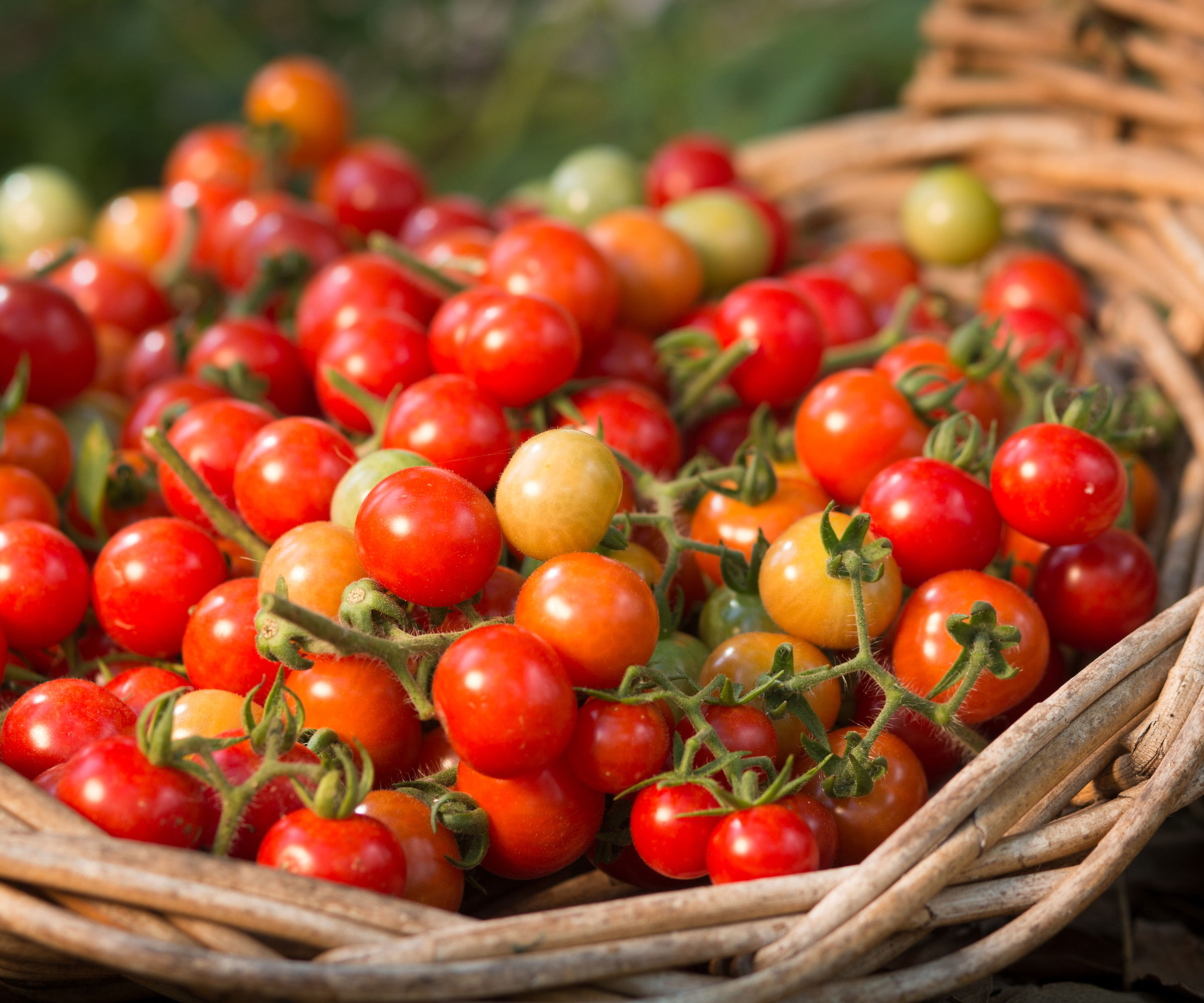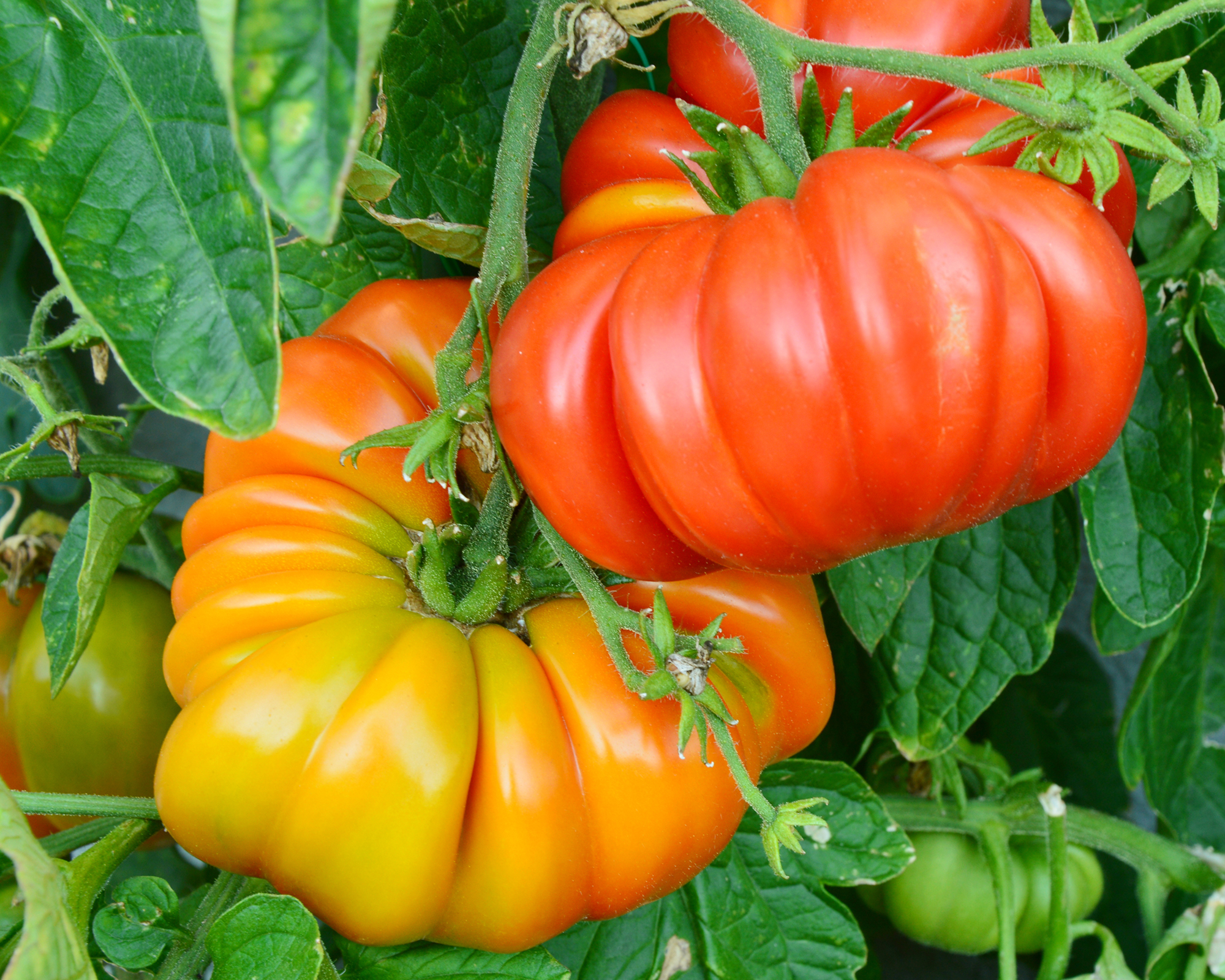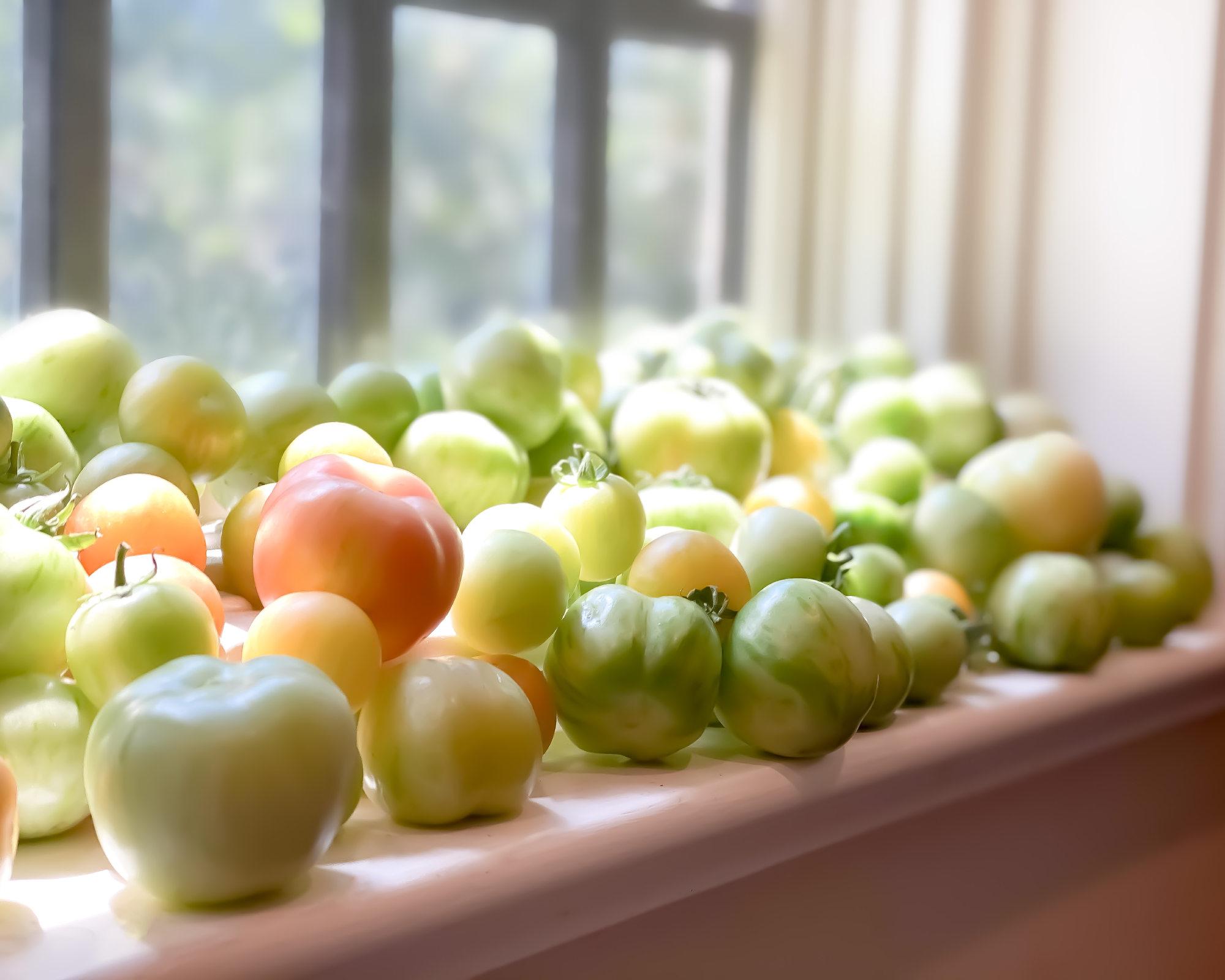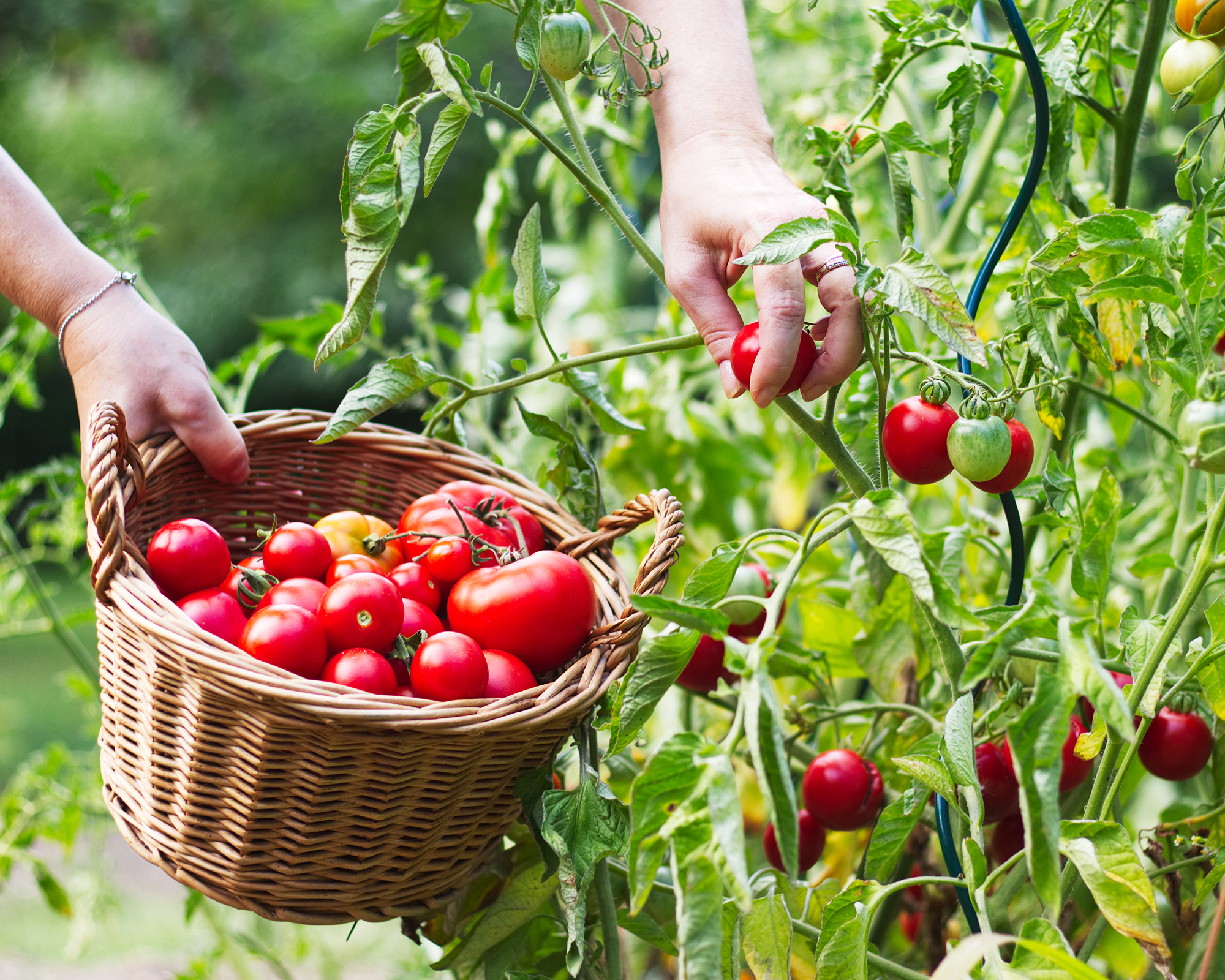How and When to Pick Tomatoes for Perfectly Ripe Results
Follow these expert tips about how and when to pick tomatoes for the tastiest harvest ever.

Amy Draiss
Harvest time for tomatoes should be declared a national holiday. This fruit is so universally loved and can be used as the central ingredient in endless dishes and preserves. It's no wonder it's the most popular garden crop. But knowing how and when to pick tomatoes makes all the difference to their flavor.
Unless you go to a farmer's market, store-bought tomatoes are usually picked well before they're ripe. They might look nice and red, but color is not the only indicator of when to pick tomatoes. If you wait until the fruit is uniformly "ripe", it might actually be too late.
While tomatoes will continue to ripen after harvesting, the ultimate flavor comes from eating them fresh from the vine. So, how do you know if the fruit is ripe? There are various schools of thought, but spotting the key signs is an essential aspect of learning how to grow tomatoes.
How to Pick the Perfect Tomato
If you’ve ever had a vine-ripened tomato fresh from the plant, you know the flavor is succulent, sweet, and full of that unmistakable tomato flavor. Tomatoes from the grocery store often pale in comparison, and there are a couple of reasons.
First, those tomatoes are often packaged and shipped hundreds of miles. If you shipped a vine-ripened tomato, it would likely arrive bruised, battered, and leaking all its delicious juice. Of course, this would also make the tomato susceptible to fungal disease, resulting in a moldy piece of fruit.
This means that tomatoes for sale commercially are picked when they are barely red and certainly not ripe. They are forced to ripen using ethylene gas and then stored in ripening rooms, often at below 50°F (10°C), which makes for bland-tasting fruit.
Another reason for lackluster tomatoes is that they are bred for certain characteristics. In the case of grocery store fruit, the goal is to get the produce to the store and on the shelves for sale before it is damaged or rotten. So farmers look for tomato varieties with firm fruit that have been bred for storage and shipping rather than for the best flavor. While gardeners often choose more interesting, flavorsome types, such as heirloom tomatoes.
Sign up for the Gardening Know How newsletter today and receive a free copy of our e-book "How to Grow Delicious Tomatoes".

Stages of Tomato Ripeness
There are six stages of tomato ripeness:
- Mature Green Stage
The fruit is almost full-sized but still green on the outside, although color may be visible inside the fruit. This is often the stage at which grocery store tomatoes are picked and then flooded with ethylene or placed in ripening rooms. There are plenty of delicious ways to use green tomatoes picked at this stage. - Breaker Stage
Color is evident around the blossom end of the tomato, indicating that ethylene, its natural ripening agent, is being produced. Benefits to harvesting at breaker stage are lack of cracking, increased flavor, no sunscald, and no additional insect damage. - Turning Stage
Now, between 10-30% of the fruit’s skin is pink to pinkish/red. - Pink Stage
The fruit is softer, and 30-60% of the fruit has color. - Light Red Stage
Between 60-90% of the tomato has color. - Red Stage
The final stage of tomato ripening. At this point, 90% or more of the fruit has color and can be eaten directly off the vine.

When to Pick Tomatoes
Tomatoes are one of the few crops that can be successfully picked before they are fully ripe. Even after they are harvested, mature green tomatoes emit ethylene gas, which ages their cells, resulting in the fruit softening and gradually turning red.
The best time to harvest tomatoes depends on your goal. For immediate eating at peak flavor, you can't beat harvesting them at the red stage when they are at their sweetest and most delicious. However, waiting until this late stage for the whole crop is not always advisable. If temperatures are heating up and the fruit is in danger of sunscald, it might be a good idea to pick earlier than you would like. The same goes for unseasonal cold. If a freeze is suddenly likely, it's better to harvest the fruit immediately rather than risk losing it all.
Additionally, harvesting when the tomatoes are greener minimizes the risk of the fruits splitting or bruising – particularly for larger, heavier varieties that may cause the vine to snap. Choosing an early window can also prevent pests and diseases from attacking the fruit.
While you won't usually want to eat tomatoes until the red stage, you can harvest them as early as the breaker stage and allow them to ripen indoors without much loss of flavor. Look for the first light blush of color at the bottom of the tomato before picking and lightly squeeze the fruit to test for firmness..

How to Harvest Tomatoes
When you’ve taken all this time to nurture your tomatoes, you don’t want to just rip them from the vine and damage them. Instead, use good, sharp garden snips or shears to cleanly slice the stalk just above the calyx that has formed to protect the bud.
If your tomatoes are in the red stage and you plan on eating them immediately, you may choose to remove the fruit by twisting it away from the stem.

Ripening Tomatoes After Picking
When picking fruits before they are ripe, you will need to provide the right conditions to turn tomatoes red. Most growers simply place tomatoes at the color break stage on the kitchen counter and let nature do its thing, but there are other options. Knowing how to store tomatoes correctly is key to ensuring they stay fresh and full of flavor.
Harvesting at the color break stage and then refrigerating can extend a tomato harvest by several weeks. Cold temperatures stop ethylene production and essentially put the fruit into temporary stasis. However, this does significantly impact flavor, making the fruits taste more bland.
Instead, some gardeners lay fruit in a single layer in cardboard boxes in a dim room, shutting out light, which can impact flavor and make skins tougher. Some growers wrap each tomato in newspaper or waxed paper to block light, keep in moisture, and prevent ethylene from speeding up ripening of the whole batch. Growers in the humid East sometimes hang entire plants indoors, protecting them from fungal issues and allowing fruits to ripen on the vine.
Whichever way you store the tomatoes, check them every day for ripening or spoiling. Green fruit should ripen in about two weeks at temperatures between 65 and 70°F (18 and 21°C). Storage at 55°F (13°C) will result in ripening in three to four weeks. To avoid tasteless fruit, do not store tomatoes below 50°F (14°C).
To ripen your tomatoes more rapidly, place them in a paper bag with a banana, or other already ripe tomatoes. Both the ripened fruit and banana give off ethylene gas, hastening the ripening process.

Amy Grant has been gardening for 30 years and writing for 15. A professional chef and caterer, Amy's area of expertise is culinary gardening.
- Amy DraissDigital Community Manager